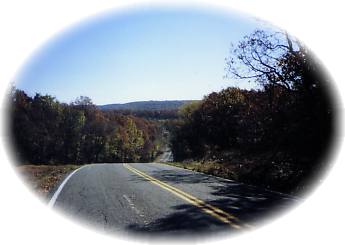Muskogee County, OK
 Long before the white man arrived, the Plains Indians - most notably the Wichita and Osage - inhabited the area that would one day become Muskogee County. In the early 1800s, settlements were established to trade with the Indians along the banks of the Three Forks, which is the confluence of the Arkansas, Verdigris, and Grand Rivers. Wildlife was abundant and the Arkansas River provided access to the markets beyond. The forced removal of the Five Civilized Tribes from 1825 to 1840 not only brought new inhabitants but also a change from the nomadic to an agrarian culture. The Creek and Cherokee tribes were allocated the areas that comprise present day Muskogee.
Long before the white man arrived, the Plains Indians - most notably the Wichita and Osage - inhabited the area that would one day become Muskogee County. In the early 1800s, settlements were established to trade with the Indians along the banks of the Three Forks, which is the confluence of the Arkansas, Verdigris, and Grand Rivers. Wildlife was abundant and the Arkansas River provided access to the markets beyond. The forced removal of the Five Civilized Tribes from 1825 to 1840 not only brought new inhabitants but also a change from the nomadic to an agrarian culture. The Creek and Cherokee tribes were allocated the areas that comprise present day Muskogee.With the arrival of the M.K.& T. railroad in 1872, the town of Muskogee became the center of commerce and business for Indian Territory. As the population increased so did the demand for services and facilities. Today, it is an attractive town, dotted with 32 small parks, and is the gateway to the eastern lake area. The port of Muskogee is part of the McClellan-Kerr Arkansas River Navigation system, handling barges that go through the inland waterway system from Pittsburgh and Minneapolis to Houston and New Orleans.
Fort Gibson Historical Site, just east of Muskogee, was the main juncture for relocation of the Five Civilized Tribes into "Indian Territory." A number of violent episodes on the frontier caused the Army to abandon Fort Smith and establish Fort Gibson in 1824. Protecting the Indians from each other and from white intruders kept the military busy for most of the next 66 years. The post, built on the Grand River near the Arkansas, soon became famous in the development of the United States.
While visiting the picturesque city of Fort Gibson, you can tour the fort grounds and the still-intact buildings with guides who are well versed in the history of the area.
Explore Muskogee County
Historic Garrett House Museum
This historic home was built in 1867 as the commanding officers residence, and is listed on the National Register of Historic Places. The three story home was part of the Fort Gibson Fort established in Indian Territory in 1824
Fort Gibson, OK MuseumsFort Gibson National Cemetery
The only National Cemetery in Oklahoma. Established in 1868, this cemetery contains graves of veterans from every war since 1812.
Fort Gibson, OK CemeteriesChouteau National Hiking Trail
The Jean Pierre Chouteau National Hiking Trail stretches from River Park to the Port of Catoosa along the Grand, Arkansas and Verdigris Rivers. It is located alongside the McClellan-Kerr Arkansas River Navigation Channel. The trail is approximately 60
Fort Gibson, OK TrailsFort Gibson Historic Site
Beginning in the early 1920s, local residents sought to preserve Fort Gibson's History. In 1936, the stockade area was reconstructed by the Federal Emergency Relief Administration, Works Progress Administration, and the Fort Gibson Stockade Commission. Today, the Site is a
Fort Gibson, OK Forts1903 Building
This interesting building is located on the corner of south Lee across from the Fort Gibson State Bank.
Fort Gibson, OK Historic BuildingsCherokee National Cemetery
The Cherokee National Cemetery is a National Historic Landmark maintained by the Cherokee Nation from before the Civil War until its transfer to the town of Fort Gibson in 1906. William P. Ross and other officials and dignitaries are buried in this cemetery.
Fort Gibson, OK CemeteriesFort Gibson Depot
The old depot is located across the street from the Fort Gibson stockade parking area and now offers gifts and information for visitors to the fort.
Fort Gibson, OK Railroad HistoryLangston House
The Langston House is listed on the National Register of Historic Places.
Fort Gibson, OK Historic HomesRiver Park
River Park provides a boat ramp to the McClellan-Kerr Navigation Channel, campsites, picnic tables, and is the southern trail head of the Jean Peirre Chouteau National Hiking Trail.
Fort Gibson, OK RV ParksFort Gibson Dam
Surrounded by high bluffs, with the expansive lake on one side and rushing river on the other, the massive structure of Fort Gibson Dam is impressive. Observation areas provide excellent views. The dam is located on the Grand (or Neosho)
Fort Gibson, OK LandmarksFirst Presbyterian Church and Fort Gibson Bell
The bell located adjacent to the First Presbyterian Church was orginally used in the church at Fort Gibson when it was acquired in 1832.
Fort Gibson, OK Historic ChurchesFort Gibson Historic Site Walking Tour
1... Stockade 2... Caretaker's Cabin 3... Library 4... Mess House 5... Kitchen 6... Bakery 7... Married Officer's Quarters 8... C.O.'s Quarters 9... Cabin 10.. Well 11.. Sutler Store 12.. Sutler's Quarters 13.. Boundary Marker 14.. Civil War Earth Works 15.. Quartermaster Warehouse 16
Fort Gibson, OK Tours